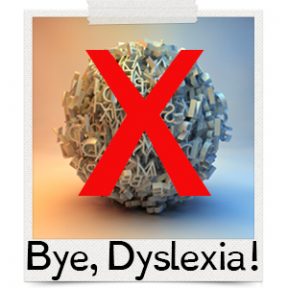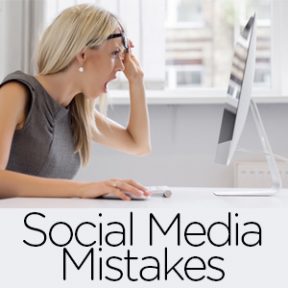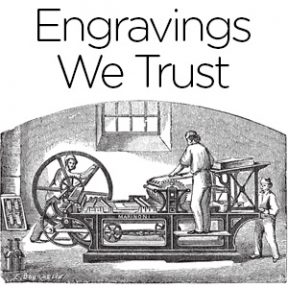 I fondly remember sailing the Californian, a tall ship, for 3 days on an Explorers’ Expedition with the Merit Academy 7th graders.
I fondly remember sailing the Californian, a tall ship, for 3 days on an Explorers’ Expedition with the Merit Academy 7th graders.
We worked the decks like they did back when the explorers sailed the seas, and the students took shifts manning the sails. We slept in bunks with the crew and ate in the galley just like they did in the 1400’s.
Our history teacher, Barbara Eastburn, says “I felt like Columbus and his sailors – far away from the comfort of land (the sight of land anyway) in search of new territory. I understand history in a way I never would have without this experience. I don’t know how exactly to explain it, but I felt more like a teacher on that trip than any other – even though I was not actually lecturing. It was the preparing for and sharing of the experience with the students.”
When the captain hollered, “All hands on deck!” at 6:00 am while we were fast asleep, the kids jumped out of their bunks and climbed up to work the sails. I sat up and brushed my hair and then started to apply some makeup (didn’t want to scare away my fellow mates!) when I heard the captain ask where I was. When I shouted up to him that I would be up on deck in a few minutes, after I “got ready,” he demanded that I drop what I was doing and get up there NOW.
I learned more about the explorers of history on that trip than I did by reading textbooks and watching movies.
So glad to have had the opportunity to take sail with the Meritans! Even if I had to swab the deck.

 I fondly remember sailing the Californian, a tall ship, for 3 days on an Explorers’ Expedition with the Merit Academy 7th graders.
I fondly remember sailing the Californian, a tall ship, for 3 days on an Explorers’ Expedition with the Merit Academy 7th graders.
We worked the decks like they did back when the explorers sailed the seas, and the students took shifts manning the sails. We slept in bunks with the crew and ate in the galley just like they did in the 1400’s.
Our history teacher, Barbara Eastburn, says “I felt like Columbus and his sailors – far away from the comfort of land (the sight of land anyway) in search of new territory. I understand history in a way I never would have without this experience. I don’t know how exactly to explain it, but I felt more like a teacher on that trip than any other – even though I was not actually lecturing. It was the preparing for and sharing of the experience with the students.”
When the captain hollered, “All hands on deck!” at 6:00 am while we were fast asleep, the kids jumped out of their bunks and climbed up to work the sails. I sat up and brushed my hair and then started to apply some makeup (didn’t want to scare away my fellow mates!) when I heard the captain ask where I was. When I shouted up to him that I would be up on deck in a few minutes, after I “got ready,” he demanded that I drop what I was doing and get up there NOW.
I learned more about the explorers of history on that trip than I did by reading textbooks and watching movies.
So glad to have had the opportunity to take sail with the Meritans! Even if I had to swab the deck.

 On October 8, 2015 , when Governor Brown signed the first dyslexia law in 25 years, parents of dyslexic kids sobbed with relief and elation. Yes you read that right, we sobbed. We know that AB 1369 will begin to help millions of kids and their parents in California from having the heartache, fear, despair, and anxiety that we experienced when our dyslexic kiddos were in public school.
On October 8, 2015 , when Governor Brown signed the first dyslexia law in 25 years, parents of dyslexic kids sobbed with relief and elation. Yes you read that right, we sobbed. We know that AB 1369 will begin to help millions of kids and their parents in California from having the heartache, fear, despair, and anxiety that we experienced when our dyslexic kiddos were in public school.
There is only one difference between my dyslexic kid and a kid that is not, and that is his brain. Now that brain scans are possible, scientists know the dyslexic brain not only looks different than the non-dyslexic brain but IS different. The dyslexic brain is not wired to process language easily and learns differently than the “regular” brain. I quoted “regular” because dyslexic kids in schools all across this country are made to believe that something is wrong with them, that they are less than, because their brain learns differently.
Nothing could be farther from the truth.
Dyslexia is not an intellectual disability. A persons’ intelligence is not lowered by his dyslexia. When a 1st or 2nd grade student with dyslexia struggles to read or write when the rest of his class is not, he quickly realizes that there is something very different about him and easily jumps to the conclusion that he is stupid. In public school, if a child is identified early and gets services because of his dyslexia (this is a whole other blog post for another day) he gets pulled from his classmates a few times a day to go to a little special room, with a handful of other kids and a teacher, adding more evidence to the folder of “I must be stupid, since I need to go to a special room with a special teacher”.
The irony of it all is the special teacher in the special room has no idea how to teach dyslexic kids effectively. Resource teachers, or general education teachers for that matter, are not trained on how to recognize or teach to a dyslexic student. It is widely known that 1 in 5 people in this country are dyslexic. 20% of the population and 80% of those kids are currently receiving special education services.
We sobbed at the passing of AB1369 for other people’s kids. For years we watched our smart, beautiful children not getting what they needed at school and instead being emotionally harmed. When you truly believe that you are stupid or something is wrong with you, make no mistake, you are harmed in a way that affects your soul and the trajectory of your life.
AB 1369 does not fix everything in public school but it is such an encouraging start.
Technically, this law does two things:
- It adds phonological processing deficit to the eligibility criteria for Specific Learning Disability under special education and
- It requires the State Superintendent to develop program guidelines for dyslexia to help teachers & parents identify and assess pupils with dyslexia. It specifically clarifies that “educational services” means an evidence-based, multisensory, direct, explicit, structured, and sequential approach to instructing pupils who have dyslexia.
Now educators can say “dyslexia”, learn how to identify it and implement appropriate instruction! (insert sobbing here).
It has been known for over 15 years from evidence-based research, that dyslexic students learn when they receive this kind of instruction. What is more exciting is that kids that do not have dyslexia but who may struggle in school also benefit from this type of instruction. Actually ALL kids can learn from this type of teaching. This law may actually begin the process of tackling this state’s high illiteracy rates
We sobbed with happiness at the idea that millions of moms and dads will eventually not have to worry about their kids, like we did.
Charlene Mercadante is a mom of two boys. Her 20 year-old son is dyslexic. She volunteers for Decoding Dyslexia CA in San Mateo County and The Charles Armstrong School in Belmont, CA. Her passion to help other parents like herself was ignited when she & her husband anguished over how to help their son in early elementary school. Follow her on Twitter @CharleneMerc
Decoding Dyslexia CA made AB 1369 happen and is a grassroots movement of CA families concerned with the limited access to educational interventions for dyslexia and other language-based learning disabilities within our public schools. They aim to raise awareness, empower families to support their children and inform policy makers on best practices to identify, remediate and support students with dyslexia in CA public schools. www.DecodingDyslexiaCA.org
 Here’s something kind of incredible: a student at the Utrecht Art Academy in the Netherlands has designed a font that makes it easier for dyslexic students to read.
Here’s something kind of incredible: a student at the Utrecht Art Academy in the Netherlands has designed a font that makes it easier for dyslexic students to read.
By making the individual letters more unique — in other words, not using the “b” and flipping it upside down to make a “q,” or rotating it to make a “d” and then flipping it to make a “p.” Since people with dyslexia have trouble with shapes that are similar, they are less likely to confuse the b’s, d’s, p’s and q’s of this new font, which increases both the time it takes to read AND the speed of comprehension. The “weight” of the font is also different from top to bottom, which also helps. It’s really quite brilliant.
Independent studies at the University of Twente and Amsterdam found that 75% of the students surveyed made fewer reading errors while reading text with the Dyslexie font. Check it out here: http://www.dyslexiefont.com
Please let me know if this font helps you or anyone with dyslexia.
[Source]
 We all use social media to stay in touch with friends and family but did you know that it can affect college admissions or job recruitment?
We all use social media to stay in touch with friends and family but did you know that it can affect college admissions or job recruitment?
Is there is anything on your social media pages that you wouldn’t want your future mother-in-law or employer to see? If there is, then take it down NOW. Even that funny photo of you chugging down beer in that cute red plastic cup — delete it, and all of them, now.
That photo of you kissing your boyfriend? Yup, delete. Your trip to Vegas — by the way, what happens in Vegas, and anywhere online, never stays in Vegas… As a matter of fact, consider it blackmail fodder in the future!
Let’s face it; there is NO PRIVACY. If you haven’t already, Google your name to see what comes up. Seriously, you’ll be surprised by what you’ll find!
So whether you’re a high school student working on getting into a top college, or you’re a college graduate seeking a great job, you need to create an online presence that will appeal to the admissions or interview committees. ASSUME THAT THEY WILL SEE IT. I’m shocked by what people continue to post on Facebook, Instagram, and Twitter. Not because of WHAT is posted, but because of who will see these little gems in the future. That hilarious drunken photo from college is a pebble thrown in the pond of your life, and it creates a ripple that can affect your future.
Successful applicants do more than just clean up their social media presence. They actually build their brand for everyone to see. By creating websites, YouTube videos and Kickstarter campaigns, their names show up “above the fold” in search engines. Using your name in your titles will also ensure that you pop up before other people with the same or similar names.
Of course, you do need to do something to bring attention to yourself, and I always encourage students to do projects. Pick something that you are interested in and passionate about. Then create a website and/or a YouTube video to promote this project. This will bring the right type of attention to you — the kind of attention that gets you that acceptance letter into a top college or that job or promotion you’re seeking.
By creating your social “brand,” you’re setting yourself up for success.
 When guests notice that I label my pantry, utensil drawers, and even my laundry room, I kind of get an odd look – like I must be wound a little too tight or like I’m simply ridiculous. My husband thinks I’m over the top (like crazy). But hey, I’ve been super organized forever, and I’m not offended by their comments. They’re just jealous!
When guests notice that I label my pantry, utensil drawers, and even my laundry room, I kind of get an odd look – like I must be wound a little too tight or like I’m simply ridiculous. My husband thinks I’m over the top (like crazy). But hey, I’ve been super organized forever, and I’m not offended by their comments. They’re just jealous!
I find that people tend to trust and respect signs and anything in print. What’s interesting to me is that they actually consider it the law of the land. A few years ago, I put a sign in the bathroom asking guests to please put down the toilet seat when done. Not only did everyone routinely abide by the sign, but when they followed someone in the bathroom who didn’t put down the seat, they actually corrected the problem or mentioned it to the culprit! Yes! It worked!
I’ve purchased every conceivable type of label maker on the market, and I get excited at every opportunity to label something. My daughter Nicole also loves to label everything and her labels are often hand printed pieces of artwork! The acorn doesn’t fall far from the tree.
So when my friend Martin Eastburn offered to teach me how to use his father’s antique engraving machine last weekend, I was over the moon. I couldn’t believe he would let me use his family heirloom! Like a little kid, I kept asking him when I could use his engraver.
During the final hours of my stay, I watched Martin set up the engraving machine to make my luggage tags (doesn’t everyone need personalized, engraved luggage tags)? I flashed back on Gutenberg setting type for his printing press back in the 1400’s. I collected each letter and number stencil that I needed and carefully placed it in the machine. We selected the bit and practiced on a scrap piece of plastic.
When I finally engraved my name and phone number on my tags, I felt a sense of accomplishment. It wasn’t a computerized machine, so I really engraved it myself – just like Gutenberg did back in the day. Of course, now I NEED an engraver!
Guess what’s on my Christmas list this year?
 When college tuition for a 4-year bachelor’s degree exceeds $200,000, you would think colleges would boast about their professors — those who TEACH the students.
When college tuition for a 4-year bachelor’s degree exceeds $200,000, you would think colleges would boast about their professors — those who TEACH the students.
RateMyProfessor.com just published a list of colleges with the highest-rated professors, and it’s no surprise that none of the Ivies or super selective colleges made the list. Why? Those colleges want professors to focus on research to win awards; they’re not concerned with the professors’ ability to teach and that’s why grad students teach many undergraduate classes.
Ever wonder why college football coaches make more than a million dollars a year, while professors can barely make a living wage? College is big business and they spend their dollars where they get the most bang for the buck. Unfortunately for students, it’s not in the classrooms.
[Source]
 When colleges now accept 58% girls and just 42% boys, admissions committees are — once again — trying to level the playing field. Hmm. It’s beginning to sound a bit like Affirmative Action…
When colleges now accept 58% girls and just 42% boys, admissions committees are — once again — trying to level the playing field. Hmm. It’s beginning to sound a bit like Affirmative Action…
Forty years ago, girls were underrepresented in college enrollment because colleges thought that they only went to college to get their Mrs. degrees (to find an eligible bachelor with the potential to make big bucks).
Middle and high school teachers downplayed the importance for girls to do well in math and science. With Women’s Liberation movements making strides in the ’60s and ’70s, this changed. Remember burning bras, and yes, hairy legs?
To level the playing field, the US Dept of Justice implemented Title IX — a federal law that prohibits discrimination on the basis of sex in any federally funded education program or activity. So the ratio of boys vs girls became closer to 50/50 in the admissions arena.
But Title IX couldn’t be the only reason for the increase in girls going to college because women started enrolling in colleges all over the world without Title IX. So why the change in trends?
Claudia Golden, an economist at Harvard, claims that this surge in girls entering college is all about the birth control pill. With young ladies having the opportunity to plan their lives: marriage, children, and careers, they could go to college and invest in careers before starting families. While this makes sense, it still doesn’t explain why the girls-to-boys ratio is now 58% to 42%.
Here’s my theory: We all know that girls mature faster than boys. Right? Remember in 2nd grade when girls flirted with boys who only wanted to play with boys at recess? Then in high school, girls wanted steady relationships when boys were just being, well, immature and really clueless about commitments? Oh, those painful years for girls while they waited for the boys to catch up with them.
Now look at this from a different perspective: girls have always been better organizers and could get their homework done on time, study for tests, and still have time to complete their college applications than boys. And, girls are less likely to be diagnosed with ADHD and get into trouble with the law. Painful, but it’s true. So maybe this is why girls get into college at a faster rate than boys do.
Now that the tables are turned and there are more girls getting into college than boys, college admissions committees are doing a sort of behind-the-scenes affirmative action for boys. Check out the numbers. At Brown, the acceptance rate for boys is 11 percent; for girls it’s just 7 percent. At Vassar, it’s 34% for boys and 19% for girls. Once again, that pendulum is swinging but this time in the opposite direction.
Looks like boys need a handicap to even the score board…
 Did you know that one in every five people is dyslexic? That’s 20% of our population!
Did you know that one in every five people is dyslexic? That’s 20% of our population!
Yet classroom teachers aren’t trained to teach students with dyslexia, and children often go undiagnosed for years.
Parents, teachers, and doctors really don’t know much about what causes dyslexia and what treatment options are available. What makes dyslexia different from other learning problems is that people with dyslexia have average to superior intelligence — they are NOT slow learners.
They are often quite gifted in math, science, fine arts, journalism and other creative areas. Geniuses like Albert Einstein, Thomas Edison, and Leonardo da Vinci were dyslexic.
So what is dyslexia?
According to the International Dyslexia Association (IDA), dyslexia is characterized by difficulties with word recognition and by poor spelling and decoding abilities. Secondary consequences may include problems in reading comprehension, which can result in limited reading experiences, vocabulary, and general knowledge.
Some of the difficulties associated with dyslexia (according to the IDA) include:
- Learning to speak
- Learning letter names and their sounds
- Organizing written and spoken language
- Memorizing math facts
- Reading quickly enough to comprehend
- Comprehending reading assignments
- Spelling
- Learning a foreign language
- Solving math equations
Dyslexia is caused by neurological problems in the brain. With proper training and exercises, dyslexic people can learn to read, write, and excel in a wide variety of careers.
A Merit Academy alumni, Zohar Wouk, struggled with dyslexia all throughout his schooling. After high school graduation, he formed a tech startup called Futuristic Lights and recruited an excellent team of programmers and social marketing experts. Zohar’s vision and drive was instrumental in the instant success of this business. Just 15 minutes after they launched their Kickstarter campaign, they raised $20,000 — and his company went on to raise over $50,000 in one month! This is a perfect example of how the dyslexic brain can be innovative and creative.
Long-time dyslexia advocate and mother, Char Mercadante, continues to promote dyslexia awareness and drive campaigns to improve teacher training — even after both of her sons have gone off to college. Next week, she will be a guest blogger on GakkoMom. Can’t wait to hear the latest about new legislation for dyslexia research and teacher training programs. Stay tuned!
 Each year college essay prompts get more complicated and difficult to write.
Each year college essay prompts get more complicated and difficult to write.
While I encourage my students to be honest and write from their hearts, I find myself explaining what the college admissions committees are looking for as these students begin this agonizing process. So many students feel defeated before they even begin the application process. Most believe that they haven’t done enough or that their lives have been so boring because they don’t have one parent in prison and haven’t been abused the other one.
PRO TIP: Sob stories are well received ifyou have overcome the obstacle.
Some prompts require deep philosophical thought processes that most teens don’t have at the young age of 17 or 18.
It seems that selective colleges are expecting students to have already done miraculous things BEFORE they start college. When my students read about applicants who have cured diseases or engineered innovative solutions, they question whether they will get into colleges with such fierce competition.
I wonder if colleges have forgotten that students want to go to college to gain the knowledge and skills to be successful once they graduate from — not before they arrive — to college.
[Source]
 Paleo and raw vegan people — you can eat delicious chocolaty and nutty desserts!
Paleo and raw vegan people — you can eat delicious chocolaty and nutty desserts!
I’ve been making these nut balls for 4 months and LOVE them!
My friends and family keep asking me for the recipe, so here it is.
There are no grains (flour), sugar, or bad oils in these nuggets.
They’re made with mostly organic nuts and seeds, and it has cacao (CHOCOLATE!) and stevia (for sweetness).
They’re only 160 calories each, and they fill you up!
It’s a diabetic’s ideal dessert!
Raw Vegan Nut Balls (Makes 30)
Ingredients:
2 cups almonds
1 cup cashews
1 cup pecans
1/2 cup sunflower seeds
1/4 cup chia seeds
1/3 cup flax and hemp seed blend
1/3 cup raw cacao powder
1/3 cup stevia
1 tsp tumeric
1 tsp cinnamon
1/2 cup flax seed oil
1/2 cup coconut oil
1/2 cup almond milk
Directions:
1. Put all dry ingredients and seasonings into a food processor. Pulse it a few times until all ingredients are mixed but not pulverized. Leave some nut chunks to offer texture to the nutballs.
2. Add the oils and milk to make the mixture sticky. Add more coconut oil or almond milk to create the consistency needed to make 1″ or 1 1/2″ balls.
3. Spray a cookie sheet with oil to keep the nut balls from sticking.
4. With wet hands, roll your nut balls and place on cookie sheet.
5. Place cookie sheet in the refrigerator for an hour to set.
6. Best when eaten chilled. Can be frozen and served later.
Creative options:
1. Roll nutballs in shredded coconut flakes
2. Place a raspberry or blackberry in the center of the nut ball
3. Place a raspberry, blackberry or blueberry on top of the nut ball










